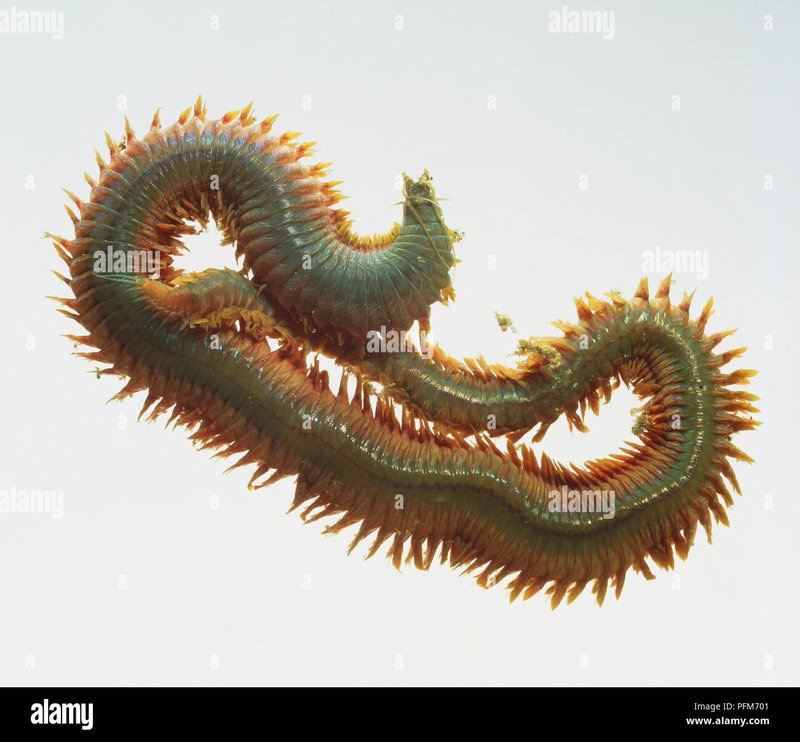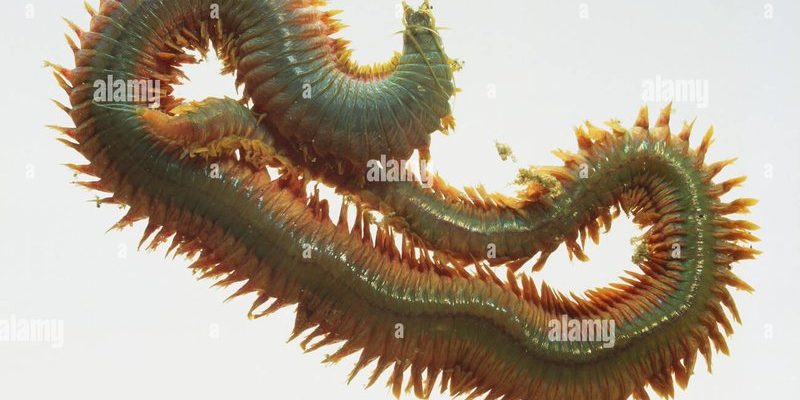
Imagine the ocean floor as a bustling city; every organism, big or small, has its part to play. Nereis virens acts like a gardener, aerating the seabed and helping to decompose organic matter, much like a compost pile enriches soil. By understanding the ecological importance of this species, we can better appreciate its role in the larger picture of marine life and why protecting it is essential.
What is Nereis Virens?
Nereis virens, often called the sandworm or ragworm, belongs to the polychaete family, which is known for its segmented bodies and bristly parapodia, or side limbs. These worms can grow up to 10 inches long and are typically found in shallow waters, burrowing into the sand or mud. They can be recognized by their long, slender bodies and distinctive coloration, which ranges from greenish to light brown.
These worms are more than just a meal for fish; they also play an essential role in the sediment ecosystem. By recycling organic materials and helping to break down detritus, Nereis virens ensures that nutrients are available for other organisms, making them a fundamental part of the marine food web.
Habitat: Where Does Nereis Virens Live?
You might be wondering where to find these little creatures. Nereis virens thrives in intertidal zones and subtidal environments. They often prefer areas with soft sediment where they can easily burrow. Think of sandy beaches after the tide goes out; that’s where you might stumble upon them if you dig a little in the wet sand.
Their habitat isn’t just important for them. The environments where Nereis virens live also provide crucial services to other marine life. The burrowing action of these worms helps aerate the sediment, allowing oxygen to reach deeper layers. This process is vital for other organisms, like bacteria and smaller invertebrates, which play their own roles in nutrient cycling. It’s a delicate balance that makes the ocean’s ecosystems thrive.
The Role of Nereis Virens in the Food Chain
Let’s dive into the food web and see how Nereis virens fits into it. These worms serve as a key food source for various marine animals, including fish, crustaceans, and seabirds. When you think about a fish’s diet, it’s like a well-rounded meal plan—they need protein, vitamins, and minerals, and Nereis virens delivers on all fronts.
Many fishermen cherish these worms as bait, particularly for species like striped bass or flounder. When a fish munches on a Nereis, it’s not just filling its belly; it’s also helping transfer energy up the food chain. Healthy populations of Nereis virens support the growth of larger predators, which, in turn, helps maintain balanced ecosystems.
The Contribution of Nereis Virens to Sediment Health
Here’s the thing—healthy sediment is crucial for ocean ecosystems. Nereis virens plays a vital role here. As they burrow through the sand, they help mix and aerate it. This mixing action allows nutrients to circulate more freely, supporting the growth of plants and algae.
But that’s not all. These worms also contribute to the breakdown of organic matter. As they feed, they consume detritus and other organic materials, digesting them and returning nutrients to the sediment. It’s like a recycling program for the ocean floor! Healthy sediment means healthier habitats for other marine life, including mollusks and crustaceans, thus supporting overall biodiversity.
Impact of Environmental Changes on Nereis Virens
Unfortunately, Nereis virens isn’t invincible. Environmental changes, including pollution, habitat destruction, and climate change, can significantly impact their populations. For example, if coastal waters become polluted, the quality of sediment can deteriorate, making it harder for Nereis virens to thrive.
Additionally, rising water temperatures can also affect their reproductive cycles. As water warms, it may disrupt the timing of their spawning, which can lead to decreased populations over time. You can see how a small change in the environment can ripple out, affecting not just Nereis virens but a whole host of marine life that depends on these worms for survival.
Conservation Efforts for Nereis Virens
Given their ecological importance, conservation efforts focused on protecting Nereis virens and their habitats are crucial. Local initiatives often include reducing pollution in coastal waters and restoring damaged habitats. Simple steps can make a big difference, like supporting sustainable fishing practices and protecting shorelines from development.
Educational programs aimed at raising awareness about the significance of these worms can also encourage communities to be more mindful of their local marine ecosystems. After all, if more people understand the importance of Nereis virens, they’re likely to support efforts to protect them and their habitats.
To wrap it up, Nereis virens may not be the most glamorous creature in the ocean, but its ecological importance cannot be overstated. From supporting food webs to promoting sediment health, this species plays an integral role in keeping marine ecosystems balanced and thriving. As we learn more about our oceans, it becomes clear that every organism—no matter how small—has a part to play.
So, the next time you think about the ocean, take a moment to appreciate the little things, like the sandworm, that keep it all running smoothly. Protecting creatures like Nereis virens ensures that our oceans remain vibrant and full of life, and that’s something we can all get behind.

